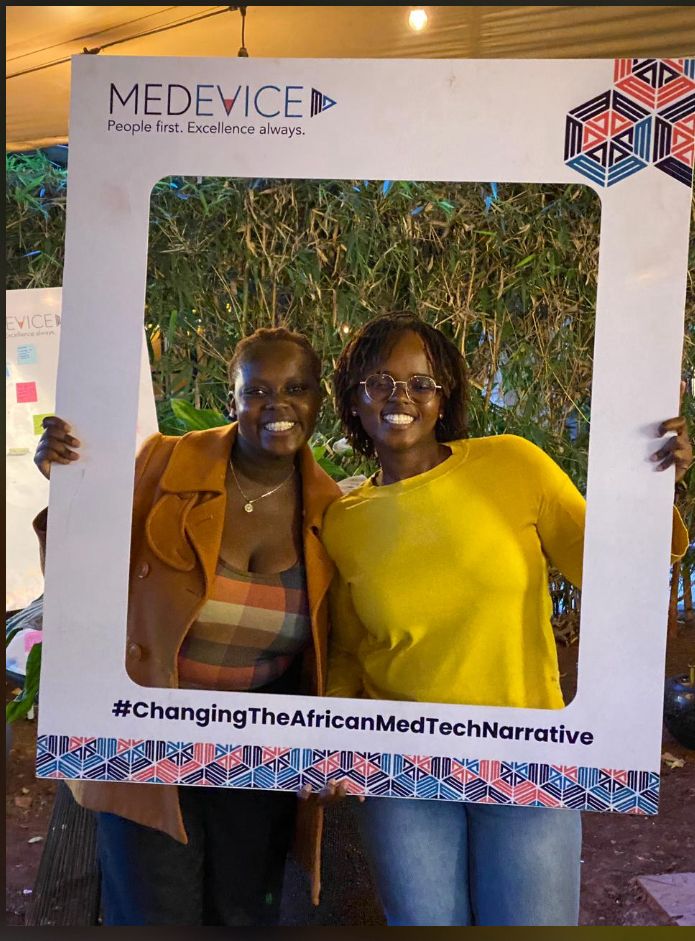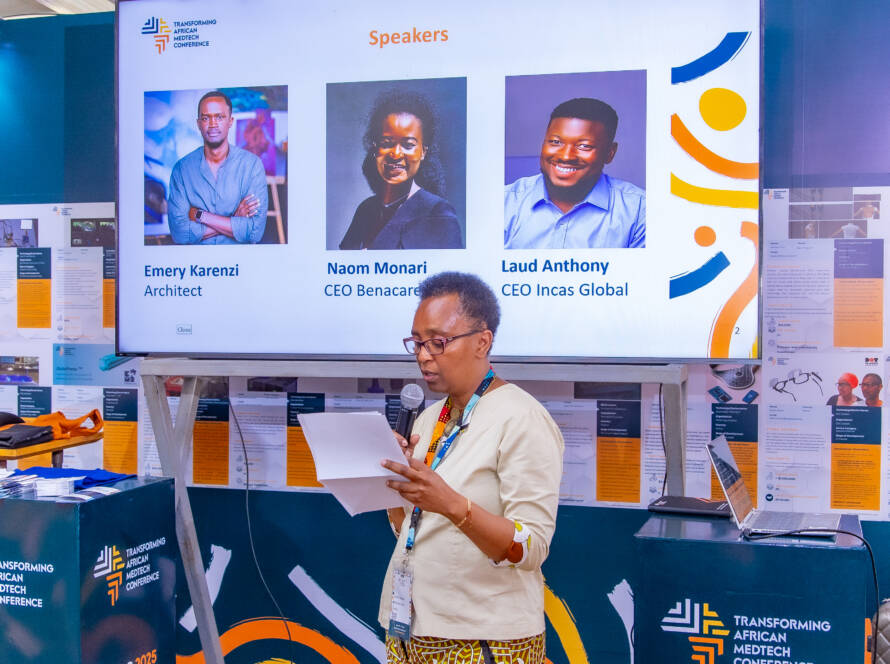In Africa, it takes an average of 13 years for medical innovations to reach the people who need them most. For women in MedTech, that journey is often even longer, slowed not only by systemic hurdles but also by the weight of being underrepresented in the field.
At The Women Leading MedTech Innovation event, we confronted these challenges head-on, while also celebrating women’s power to redesign the system itself.
From the opening reflections to intimate circle conversations and bold closing commitments, one truth stood out clearly: women continue to play a significant role in advancing healthcare innovation.
The day began with opening reflections that laid bare the hard truths: the innovation-to-market lag, the persistent gender disparity in STEM, and the reality that many young graduates leave school without clear pathways into the MedTech workforce. Communication surfaced as a defining thread too, brought home by one attendee’s description of mammograms as a “torture device,” a vivid reminder that innovation must be empathetic as well as effective.
With this framing, participants moved into three circles, each exploring a different dimension of change.
Circle 1: From Idea to Impact
Facilitated by Wambui Nyabero & Sahar Jamal
The first circle opened with a daring question: Why does gender matter in African MedTech?
The answer was clear: because gender shapes the way healthcare is designed, delivered, and experienced. Women’s perspectives uncover blind spots in patient journeys, highlight overlooked needs, and create solutions that speak to realities others may miss. Without those perspectives, innovation risks being incomplete.
The discussion did not stop there. Attendees reframed gender from being a barrier to being a source of strength. The very gaps women encounter, whether in access, mentorship, or visibility, were seen as starting points to build something better. Even reproductive capacity, often viewed as a limitation, was reframed as power: “We can use every part of who we are, our biology, our skills, and our experiences, to fuel innovation.”
Here, gender was not about representation alone. It was about expanding what innovation looks like, making inclusion the engine of transformation.
Circle 2: Education, Policy & the Innovation Ecosystem
Facilitated by Dr. June Madete & Emily Macharia
Education and policy emerged as powerful levers for change. Dr. June Madete shared her journey of launching Kenya’s first Biomedical Engineering BSc program, mentoring students, and pushing female graduates to aim higher than “lesser roles.” She also revealed that Kenyatta University will soon launch a Master’s program in Medical Device Innovation, opening doors for anyone in healthcare, not just engineers.
Others spoke about the critical role of “translators”, people who bridge the gap between innovators, policymakers, funders, and the market. Without them, many ideas risk stalling before reaching patients.
Policy alignment was another hot topic. For example, innovators introducing a malaria diagnostic were advised to approach county governments in high-prevalence regions and demonstrate cost savings to align with local priorities. But challenges remain: funding is often siloed, leading to oversaturation in some areas like maternal health, while others like TB remain underfunded. The consensus was clear: the government must be empowered to set its own priorities, rather than having them dictated by external funders.
Participants also pushed for stronger support systems for innovators, from databases of MVP-stage innovations that funders can access, to platforms like the AI HealthBeat Podcast that amplify African voices. And in a reminder of how complex the ecosystem is, one pharmacist pointed out that in Kenya, pharmacists are the regulators of medical devices—a group innovators cannot afford to overlook.
Circle 3: Communication, Advocacy & Storytelling
Facilitated by Julliet Hinga
“If you can’t explain it, it won’t scale.” That truth ran through this circle on communication and advocacy.
The discussion began with the disconnect between innovators and policymakers, who often don’t fully grasp the technologies being developed. Participants agreed: effective lobbying is critical if innovations are to gain government buy-in. One participant even pledged to be a go-to resource for navigating government systems.
Communication also emerged as a personal responsibility. Too often, innovators—even those with PhDs—struggle to explain their projects simply. As one attendee said in frustration, “So many projects and you’re not able to just tell me it’s a diagnostic tool.” The group agreed that adapting communication styles to the audience, whether policymakers, investors, or health workers, can make or break adoption.
Women were especially urged to speak up and share their stories. Personal platforms like LinkedIn, blogs, or podcasts were highlighted as powerful tools for visibility and trust-building. One example stood out: summarizing a thesis on using AI to prevent surgical errors into an accessible LinkedIn post, making complex science both human and impactful.
Encouragingly, institutions are beginning to respond. KEMRI now runs programs pairing researchers with journalists, while universities are embedding communication into their curricula. Certification programs in healthcare communication are also emerging, signaling that storytelling is no longer an afterthought; it’s a professional skill.
Closing Reflections and Commitments
As the event drew to a close, one participant asked a question that resonated with many graduates: “How do we transition into different fields after university?”
The answer was practical yet empowering: by exposing yourself to people in different sectors, asking questions, and building networks, you create your own bridge to opportunity.
To anchor the discussions in action, participants made public commitments:
- Offering two internships to biomedical engineers.
- Mentoring students in medical device design and R&D.
- Continuing advocacy through the AI HealthBeat Podcast.
- Sharing knowledge openly on personal platforms.
- Supporting women in public speaking and storytelling.
- Designing innovations with dignity at the center.
Looking Ahead
The MedTech Connect Series: Women Leading MedTech Innovation event was more than a conversation. It was a collective declaration.
By naming barriers, reframing challenges, and pledging action, the event showed that women are not just present in Africa’s MedTech ecosystem; they are playing a huge role in its transformation.
And as their voices grow louder, through stories, advocacy, and innovation, the future of healthcare will not only be advanced, but also inclusive, equitable, and deeply human.




